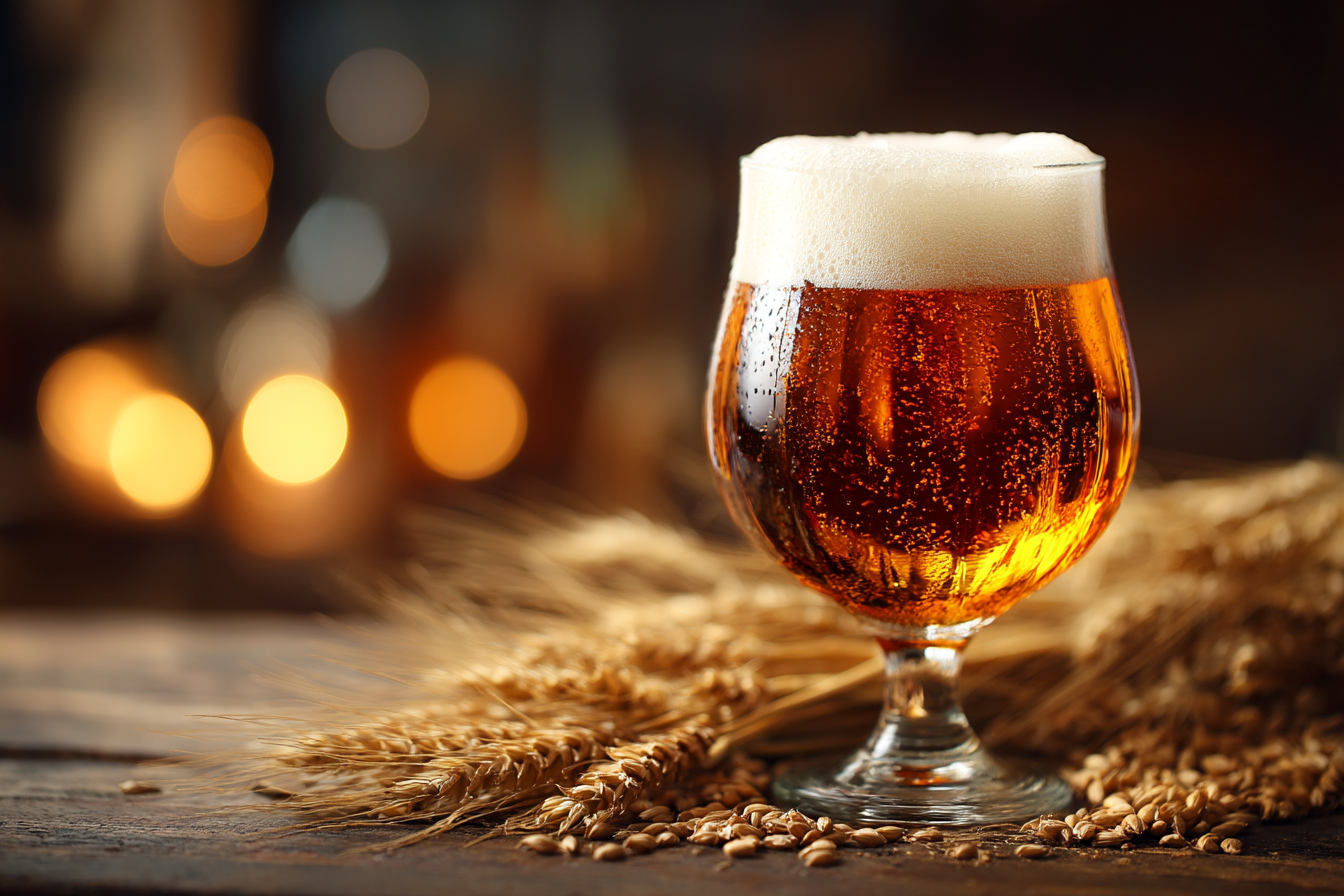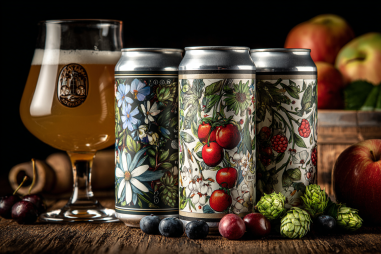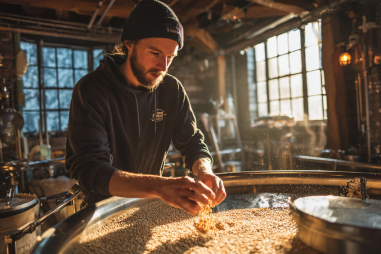Roggenbier is a fascinating beer style that has gained a devoted following among craft beer enthusiasts. Rooted in the use of rye malt instead of the more common barley or wheat, Roggenbier offers a flavor experience that is both familiar and intriguingly different. Whether you’re a seasoned beer drinker or just beginning to explore rye-based brews, understanding the Roggenbier flavor profile opens up new dimensions of taste and aroma that are well worth discovering. Let’s take a deep dive into what makes this beer so special and what you can expect when you pour a glass.
Overview of Roggenbier as a Rye-Based Beer
Roggenbier, often referred to as German rye beer, is a traditional style that originates from Germany. The defining feature of Roggenbier is its significant use of rye malt, which typically makes up at least 50% of the malt bill. Rye grain brings a distinctive texture and complexity to the beer, influencing both taste and mouthfeel in a way that barley alone cannot achieve. Rye is more fibrous and protein-rich compared to barley, which means it impacts the beer’s body by giving it a smooth, almost creamy sensation when sipped.
Unlike more common wheat beers (Weissbier), which tend to be fruity and lightly spicy, Roggenbier incorporates the peppery and earthy characteristics of rye. The style has seen a resurgence thanks to craft brewers eager to explore different grain profiles, and it is increasingly found on tap and in bottles worldwide. The boldness and unique grain character make Roggenbier a standout in the rye beer category.
Primary Flavor Components of Roggenbier
At the heart of Roggenbier’s flavor profile is the interplay between several elements, each contributing layers of complexity:
- Spice: The rye malt imparts a noticeable spiciness that is often described as peppery or clove-like, adding warmth and sophistication.
- Earthiness: Rye’s inherent earthiness gives the beer a grounded, somewhat rustic quality that connects it to its agricultural roots.
- Fruitiness: Depending on fermentation techniques and yeast strains, subtle fruity esters such as hints of banana, apple, or pear may emerge.
- Malt Sweetness: A gentle sweetness from the malt balances the spice and earthiness without overpowering them.
- Bitter Finish: A moderate hop bitterness can be present, but it is usually secondary to the malt flavors in Roggenbier.
Overall, Roggenbier’s flavor is robust but balanced, offering complexity that changes as the beer warms and opens up.
The Role of Rye Malt in Flavor Development
Rye malt is unique among brewing grains because of its texture and chemical composition. Higher in protein and beta-glucans than barley malt, rye creates challenges for brewers but also opportunities for flavor innovation. The proteins contribute not only to a hazy appearance but also to a fuller, more velvety mouthfeel.
The rye grain’s husk is thinner and more delicate, which affects how flavors extract during mashing. Rye malt brings spicy phenolic compounds that are essential to the characteristic taste of Roggenbier. These phenolics can sometimes be reminiscent of black pepper, coriander, or even baking spices. Additionally, rye’s complex sugars develop a deeper malt sweetness and can enhance the perception of fruity esters.
In short, rye malt does much of the heavy lifting in shaping the flavor profile, providing both structure and distinctiveness.
Yeast Contributions to Aroma and Taste
Yeast plays a vital role in defining the aroma and flavor of Roggenbier. Often, German ale or lager yeast strains known for their clove and banana ester production are chosen to complement the rye’s spicy character. The phenolic compounds produced by these yeasts—for example, 4-vinyl guaiacol—work synergistically with rye malt, amplifying that signature spicy aroma.
The fermentation process can also introduce subtle fruitiness. Depending on temperature and yeast strain, you might detect aromas ranging from green apple and pear to mild citrus, which balance and round out the overall profile. This interplay between malt and yeast is crucial because it creates complexity without muddling the clarity of Roggenbier’s core character.
Common Tasting Notes: Spice, Earthiness, and Fruit
When tasting Roggenbier, several signature notes typically stand out:
- Spicy Rye: The hallmark flavor derived from rye malt, often described as black pepper, clove, or even cinnamon-like warmth.
- Earthy Undertones: A subtle soil-like, grainy quality that grounds the beer and adds depth.
- Fruity Esters: Hints of banana, apple, pear, or citrus add brightness to balance the spice and earthiness.
- Mild Sweetness: Malt-driven sweetness helps round out the mouthfeel and offsets bitterness.
- Low to Moderate Bitterness: Hop bitterness is generally subdued but provides a clean finish.
The overall experience is a harmonious blend of complex flavors that develop over the course of drinking.
Comparing Roggenbier Flavor to Other Rye Beers
Roggenbier is often compared to other rye beers, such as American Rye Ales or Belgian rye-style beers. Each of these styles uses rye malt but expresses it differently.
- American Rye Ale: American versions tend to be hoppier and bolder in bitterness, with the rye spice playing more of a background role. They often showcase resinous or piney hop flavors that are less common in traditional Roggenbier.
- Belgian Rye Beers: Belgian brewers typically use rye malt in more experimental ways, sometimes blending it with wild yeast fermentations or barrel aging. This can bring funky, sour, or wild yeast character along with rye spice.
- Traditional German Roggenbier: Focuses on balanced malt and spice, clean yeast esters, and moderate bitterness, preserving rye as the star of the show.
Understanding these differences helps drinkers appreciate Roggenbier’s more restrained and elegant approach to rye malt flavors.
Food Pairings That Complement Roggenbier’s Profile
Roggenbier’s complex flavor profile makes it an excellent companion for various foods. Its spicy and earthy notes pair particularly well with dishes that have robust seasoning or comforting, hearty elements:
- Smoked meats and sausages: The peppery rye spice complements smoky, savory flavors.
- Hearty stews and roasts: Earthy undertones in the beer resonate with rich, slow-cooked meats and root vegetables.
- Spiced cheeses: Varieties like aged Gouda or sharp cheddar can match well with Roggenbier’s malt sweetness and spice.
- Caraway rye bread: A classic pairing, as the bread’s flavors echo the rye in the beer.
- Roasted nuts and caramelized onions: These enhance the beer’s subtle fruitiness and mild sweetness.
These pairings can enhance your tasting experience, accentuating the beer’s nuances and making meals that much more enjoyable.
Tips for Appreciating Roggenbier’s Nuances
To fully savor Roggenbier, consider the following tips:
- Serve slightly chilled: Around 45-50°F (7-10°C) allows the flavors and aromas to shine without being muted.
- Use a tulip or weizen glass: These glasses help trap and concentrate the spicy and fruity aromas.
- Take small sips: The complex profile rewards slow, thoughtful drinking to pick up subtle notes.
- Allow the beer to warm gradually: This can reveal evolving flavors, especially the malt sweetness and fruitiness.
- Try side-by-side tastings: Comparing Roggenbier with other rye or wheat beers highlights its unique qualities.
With mindful tasting, you can appreciate why Roggenbier is beloved by those who seek something both familiar and refreshingly different in their beer.
Unlocking the Taste of Roggenbier
Roggenbier stands out as a unique expression of rye malt in the beer world. Its characteristic spicy notes, earthy undertones, and subtle fruity esters create a flavor complexity that is hard to find elsewhere. Far from just another craft beer trend, Roggenbier honors tradition while offering drinkers a rich, satisfying experience that celebrates the rye grain.
Whether you are pairing it with hearty food or enjoying it on its own, Roggenbier invites you to explore the nuanced art of rye brewing. By understanding its flavor profile and appreciating the craftsmanship behind it, you can deepen your enjoyment and discover why this style continues to captivate beer lovers around the world.







